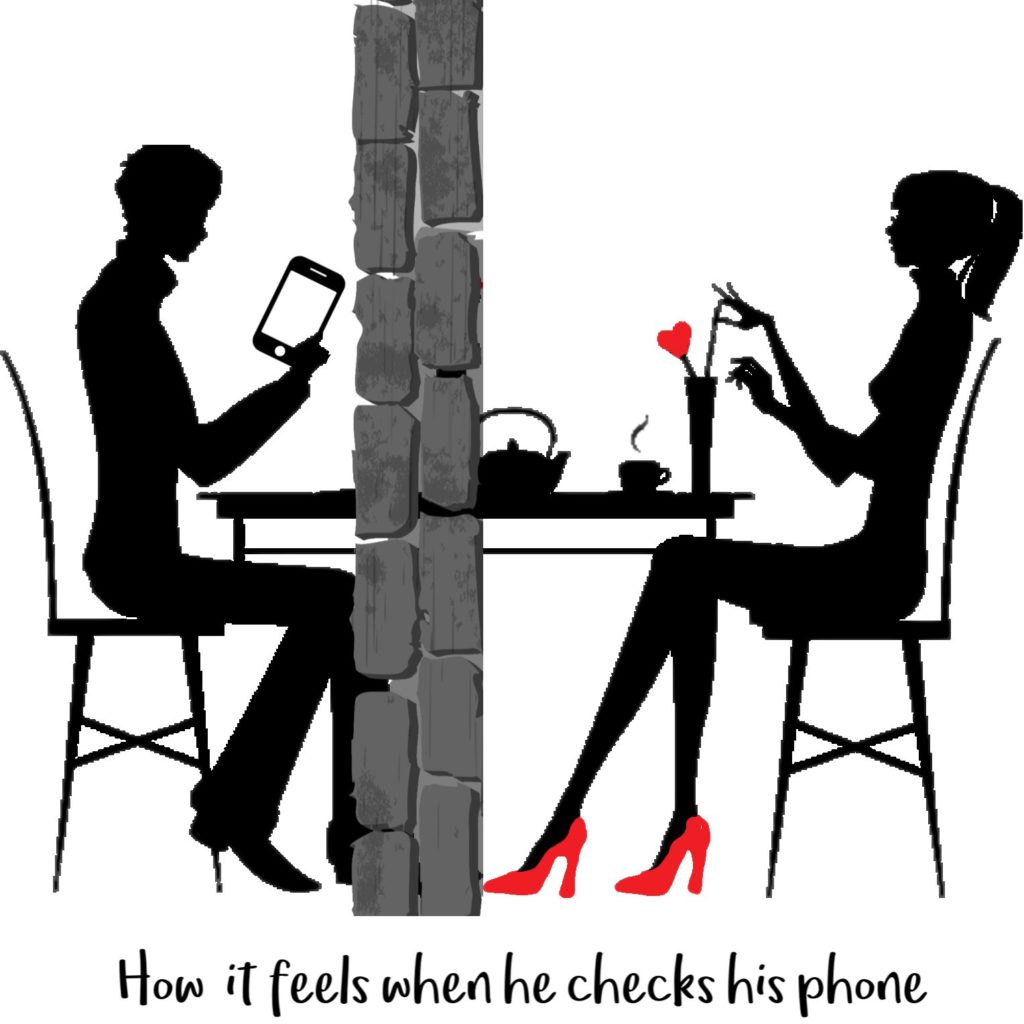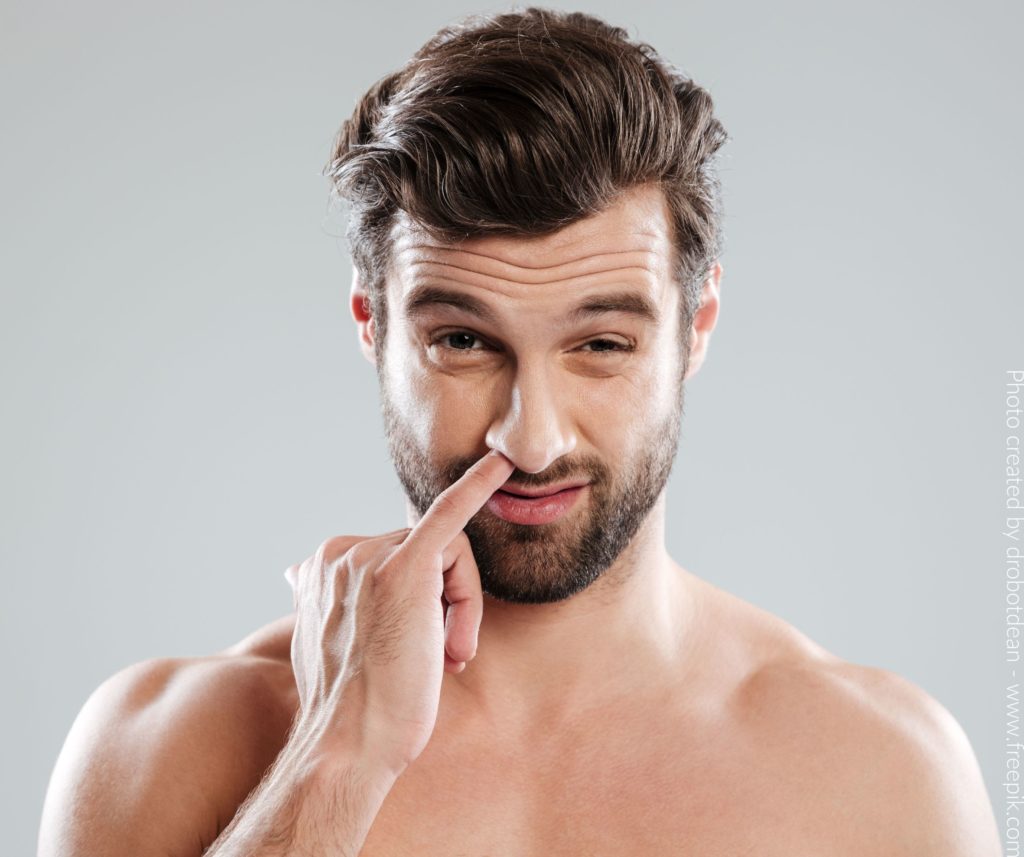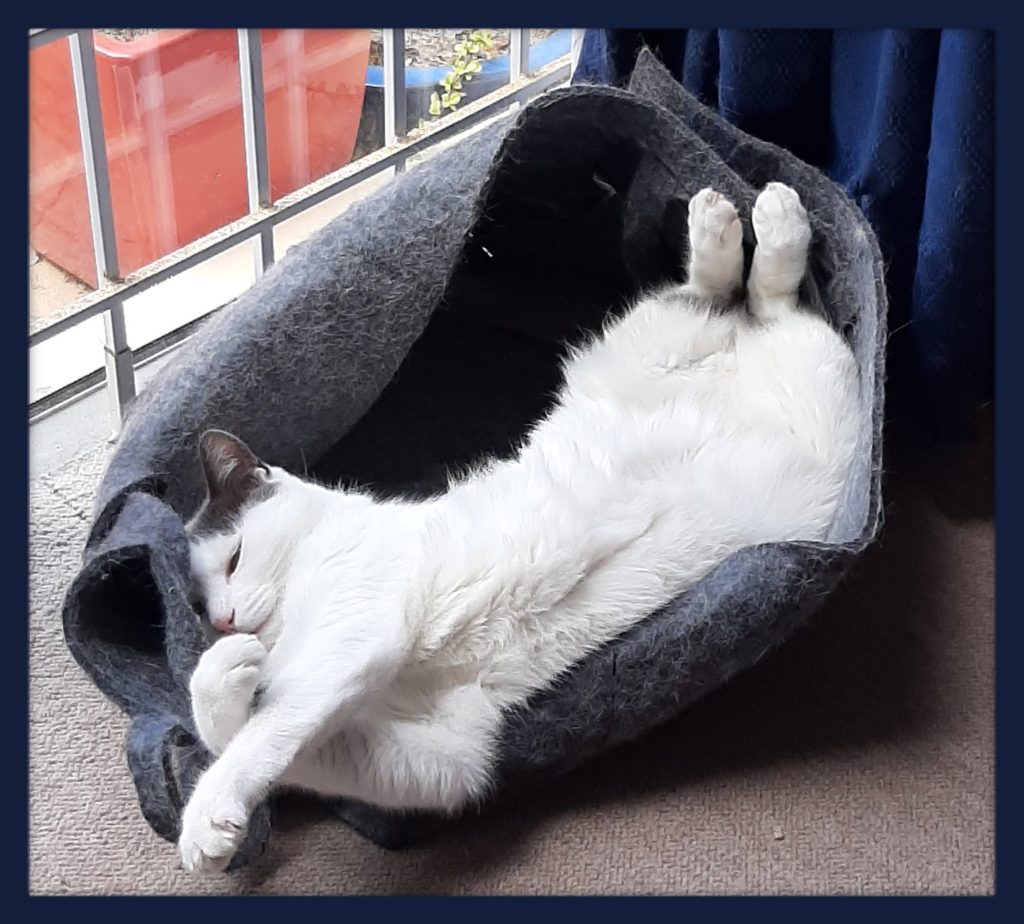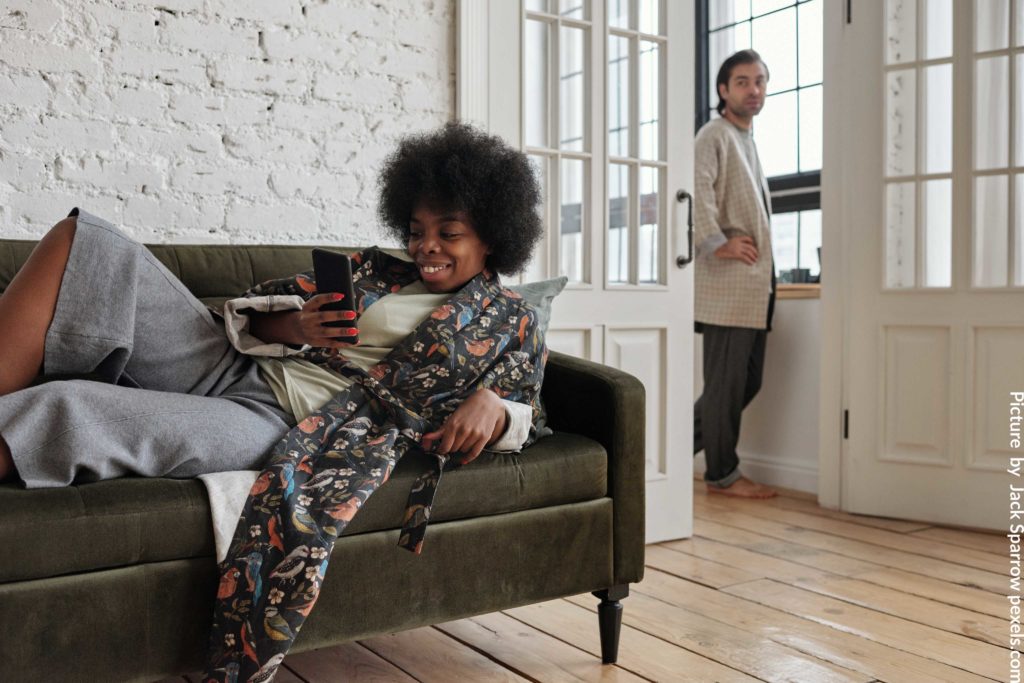Non-Verbal Communication and Smartphones

Smartphones are an increasingly fundamental part of life – especially in this covid-19 lockdown world we have been thrust into. They have become our portal to the outside world and a means to buffer against the danger of cabin-fever insanity. However, while they help build bridges between us and those far away; they are also outstanding at building walls between us and those right beside us. While excellent at allowing us to communicate how much we miss someone; they can also be integral in how we dismiss and hurt that same person.
What is Phubbing?
Phubbing is snubbing someone by using your phone (Phone + Snubbing). For me, coming across this term was an Ah-Ha moment. Yes, that’s what I was feeling. When I chatted to someone and they checked their phone, it felt like they were choosing to talk to someone else right in the middle of our conversation. Essentially, albeit perhaps subtly, I was being rudely dismissed in favour of an app or to connect with another person.
Should Phubbing be an Issue?

Often the action of picking up a phone while talking to someone is seen to be okay, if its prefaced with Don’t stop, Im still listening…If anything this makes it even ruder and more dismissive. Whatever you were talking about has been verbally confirmed as being less important than whatever has popped up on a screen.
Am I being dramatic or overly emotional if I get irritated or upset when I notice that, during a conversation, someone’s eyes keep wondering to their phone or their fingers twitch in their phone’s direction?
Before you say “YES! Everyone does it, relax it doesn’t mean anything”, lets reframe things.
While on a date, you are telling the guy about your day and he keeps checking his cutlery or continuously makes comments to other patrons – How would you feel? Or how about, if you were sitting chatting to a friend and she opened a book while saying Don’t stop, I’m still listening – What would you think?

The Importance of Non-Verbal Communication
Communication is divided into two categories: What we hear (verbal) and what we see (non-verbal).
While words are important in saying something, it’s often our unconscious expressions and mannerisms that legitimise what we are saying or reinforce what we are not saying. The tone of your voice, how much eye contact you make, hand gestures and posture all convey strong messages to those around you.
For example, if I say “yes” but I shake my head – will you believe that I am agreeing with you? What would I be telling you if I avoided eye contact, angled my body away from you and keep still rather than nod or shake my head while you talked?
Non-verbal communication is powerful. If you say one thing but gesture another, you will most likely be perceived as being dishonest. And without saying a word or raising my voice, I am able to tell you very loudly that I am not interested in engaging with you and I don’t value what you have to say.
Non-verbal communication is important in building trust and a good rapport between two people. The flip side of this is that it can also generate confusion; causing hurt, escalating tension and mistrust between people.

7 Types of Non-Verbal Communication Explained
There are many forms of non-verbal communication. Often non-verbal communication is referred to as body language. However, non-verbal communication goes beyond body position and includes all behaviours which don’t use words to relay a message. To make things easier, we can divide non-verbal communication into 7 groups:
- Body movement and posture: The way you walk, sit or stand and even angle your head all create a perception of you and what you think
- Facial expressions: A thousand words can be spoken with just one look – Interestingly, facial expressions are universal in what they convey which is why they are so useful when you don’t speak someone’s language and need to “tell” them something
- Gestures: Pointing, waving and beckoning can tell us what happened or what we need to do. However, it’s important to remember that gestures are not universal and what is welcomed by one person could create conflict with someone else
- Touch: What is acceptable and when to physically touch varies drastically between settings and especially across cultures. A simple handshake can be inappropriate or expected, it can convey warmth or a warning
- Space: Physical space between two people often conveys the type of relationship they have. Generally, the closer you are the more personal the relationship is. Although, space can also be used to exert feelings of intimacy or intimidation
- Eye contact: Visual senses tend to be dominant therefore the way you look (or don’t look) at someone impacts the flow of conversation as well as signals how interested you are in a conversation
- Voice: It’s about how you say what you saying. However, tone and emphasis aren’t universal so can vary noticeably across languages and cultures
What phubbing comes down to is communication and phubbing falls into the non-verbal category of communication. If anything, saying that Phubbing is categorised within non-verbal communication, is reason to pause and ask “What has my body language been saying to those around me?”
Phubbing and Romantic Relationships

My cat has a very low tolerance of phubbing. She’s also not shy to let me know just how much she disapproves of my attention being diverted to some unknown entity for lengthy periods of time. Granted she is quirky. She believes cardboard is a snack while fish is to be avoided and like all cats is convinced that my sole reason for living is to make her happy. While I don’t think biting me is a great way to make her point, she has succeeded in making me very aware of how often I reach across to check my phone without realising it.
If phubbing causes my laid-back cat to bite, what does it do over time within a romantic relationship?
Studies show that the impact of phubbing in romantic relationships is quite harmful. Over time it has reportedly led to:
- Increased conflict
- Decreased communication
- Increased emotional distance between partners
- Increased feelings of being ignored and rejected
- Increased levels of depression
All of which result in lower levels of relationship satisfaction and increasingly the complete breakdown of a relationship.

Why Phub?
If we know its harmful then why is it an increasing problem in relationships? Why is it so difficult to put our phones down and spend quality one-on-one time with someone we love?
An addiction is a pattern of behaviour which is repeated. Smartphones are a lot like gambling – the more you play on one the more you want to. Our brains don’t help us here. It’s been shown that we can derive instant gratification by being on our phones. This is because as we squelch our fear of missing out (FOMO) by messaging back and forth or browsing through social media, our brains release dopamine (the feel good / reward hormone). Because of the similar influence on brain impulses, some researchers have even compared constant smartphone use to a cocaine addiction. World-wide technology rehab centres, focused on assisting with internet and smartphone addiction, are emerging.
Nomophobia and FOMO
Nomophobia (NO MObile PHone PhoBIA), a fear of being without a cellphone, is so real that it can negatively impact our bodies. A study revealed that test-subjects who were not able to answer or have their smartphone close by, experienced an increased level of anxiety, blood pressure and heart rate! They also were less able to concentrate and solve problems.
The irony of preventing the dreaded FOMO from catching us by constantly checking our smartphones, is that we are missing out on our own “now moments” with people we care about most. Instead our attention is captivated by whoever happens to message us or post their own “now moment” or thought online.

How to Practically Manage Phubbing
5 Things for You:
- Acknowledge that to a certain degree all of us are guilty of phubbing
- Activate or download an app to monitor your phone use so you can determine how you spend your time
- Schedule time for social media and restrict yourself to that time
- Making a list of activities where your phone will be completely out of sight eg: Meal times
- Buy an alarm clock – don’t take your phone to bed, that way its not the last thing you put down at night or the first thing you reach for in the morning
5 Strategies for Others
- Start by asking if you can both put your cellphones out of sight to enjoy uninterrupted time together
- If they pick up their phone while you are talking, stop talking. Wait for them to realise you are not talking and wait until you have their full attention before starting again
- If they consistently seem to need to be on their phone – politely ask them if they would like to reschedule time with you as they seem to be quite distracted
- If you know they are likely to be a phubber then bring a book or something very obviously inappropriate to do while chatting to someone, then pull it out when they reach for their phone
- Get up and walk away to look at something

Conclusion
When it comes to smartphones, it’s wise to remember that your phone should work for you and not monopolise your attention. You need to decide how much phubbing is acceptable to you as well as what non-verbal message you choose to send to those around you.
I’ve learnt that the world didn’t stop when I put my phone away to pet my quirky cat or share a meal with the man I love. Instead I need less plasters to patch up bites and Dinner for Two is exactly that, dinner which only includes the two of us.
